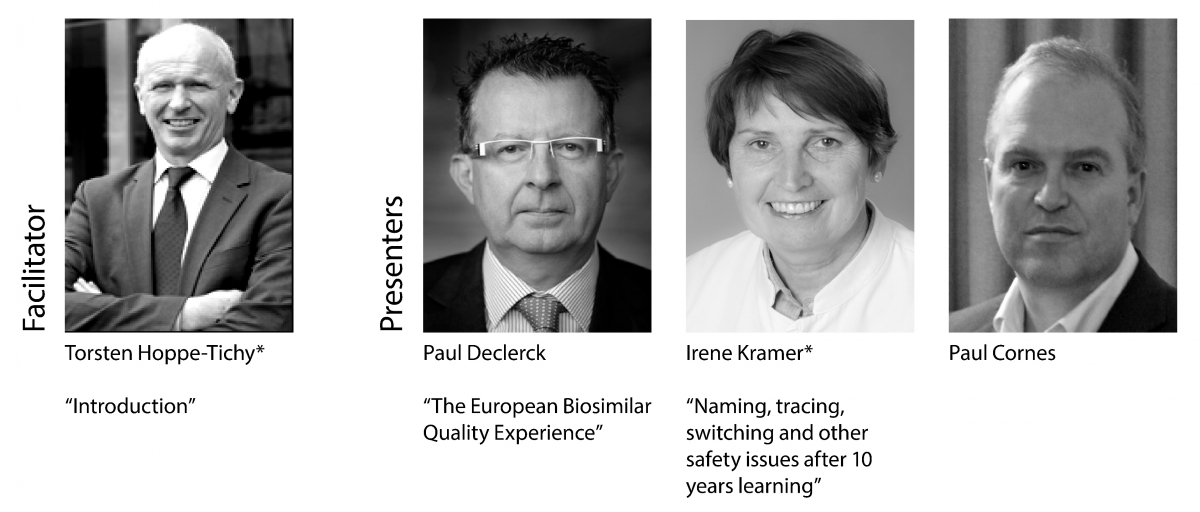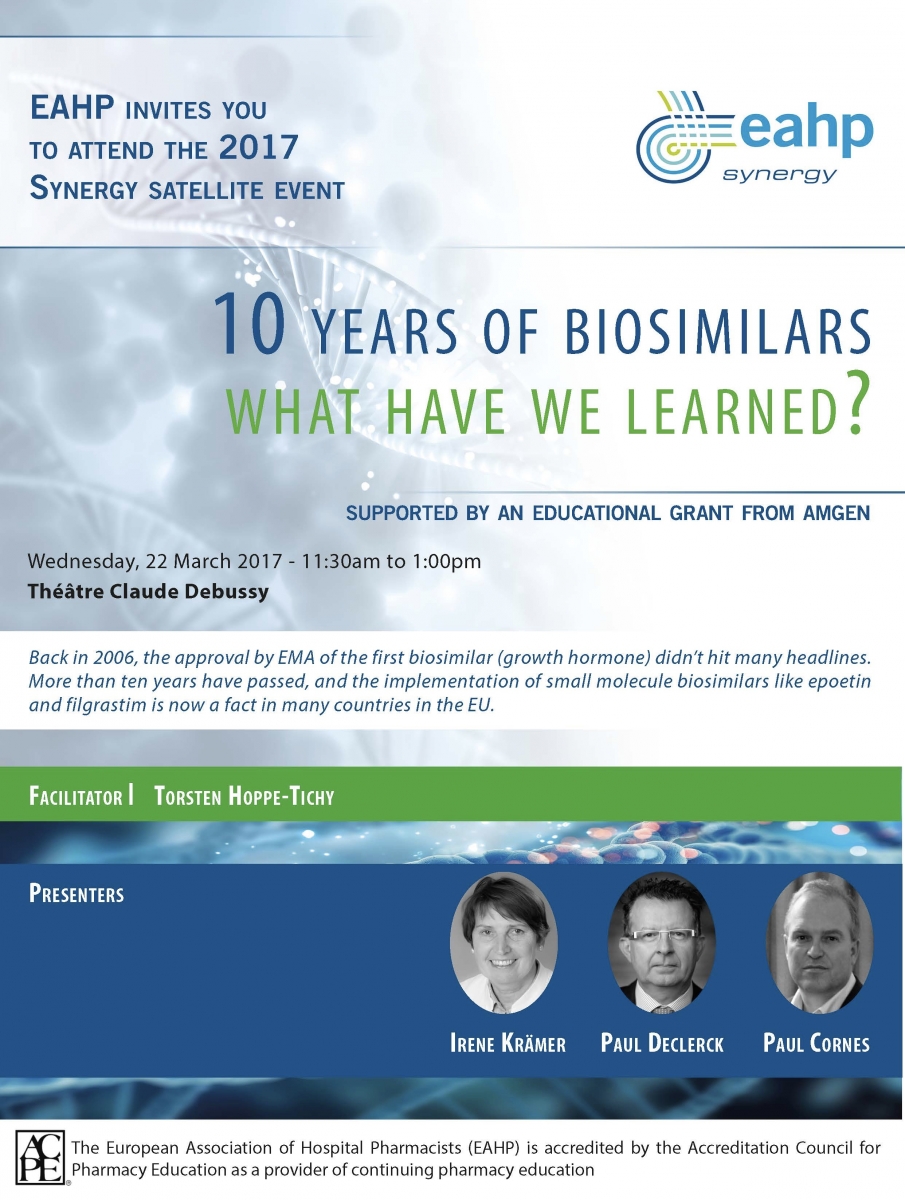
Linked to EAHP statements:
Section 2: Selection, Procurement and Distribution
ACPE UAN: 0475-0000-17-004-L04-P. A knowledge based activity.

Abstract

Back in 2006, the approval by EMA of the first biosimilar (growth hormone) didn’t hit many headlines. With the approval in 2007 and 2008 of several biosimilars for epoetin and filgrastim, it was a different story. Health providers seized the opportunities of relevant savings for drugs that had been in the market for many years and a serious debate ensued. (first approval of Eprex® in Europe goes back to 1989) Physicians and pharmacists showed some distrust, as these complex biologic drugs were not seen as generics. The interchanging of these drugs was not easily accepted, and there was a feeling amongst pharmacists that these drugs should be handled with care, at least like narrow spectrum drugs (e.g., theophylline, carbamazepine and cyclosporine). The fact that the EMA was focusing on patient safety also had the unintended effect of a self-fulfilling prophecy, raising the level of concern among health professionals.
More than ten years have passed, and the implementation of small molecule biosimilars like epoetin and filgrastim is now a fact in many countries in the EU. We have learned a lot in the process, and used it to our advantage, easing some financial pressures while ensuring best care of patients. As some experts argued that a change in the manufacturing process created a new biological drug, we also understood that even a branded product could be seen as a sort of biosimilar of themselves, as they had undergone changes through their years on the market. On the other hand, some experts would argue that this does not apply, as the cell line remains the same. Hospital Pharmacists already knew everything about careful batch and brand records and we learned that these are all important in the biosimilar setting. Most of all, we learned that to fully take advantage of the concept of biosimilars, we, as hospital pharmacists, need to understand everything about these drugs. Having the knowledge allows pharmacists to share this information with physicians who may be reluctant to use them, and also with managers, who may be too eager to reap the savings, not forgetting that, even with millions of units used in Europe, safety and efficacy problems remained absent.
A new challenge is around the corner, which is the first biosimilar of a monoclonal antibody (infliximab) which was approved in 2013, and is now used in several EU countries. The oncological monoclonal antibodies will soon have approved biosimilars. The financial stakes are higher than ever, with the ever-growing cost of new medications increasing the need for every savings we can achieve. For monoclonal antibodies for cancer and inflammatory diseases, this means billions. Can we use the knowledge we obtained with the small molecules to ensure that the biosimilars of monoclonal antibodies will be used to their full potential, respecting the needs and worries of all involved? This is the real challenge.
Learning Objectives
After the seminar, the participant should be able to:
- summarise what biosimilars are in the market;
- summarise what biosimilars will get into the market soon and in what indications;
- summarise the most important arguments for putting the different biosimilars on the hospital formulary.
Keywords: biosimilars, biologicals, oncology, monoclonal antibody
* Indicates speaker or SC member has stated a conflict of interest which has been reviewed and accepted. See speakers’ bios page for more information.



























